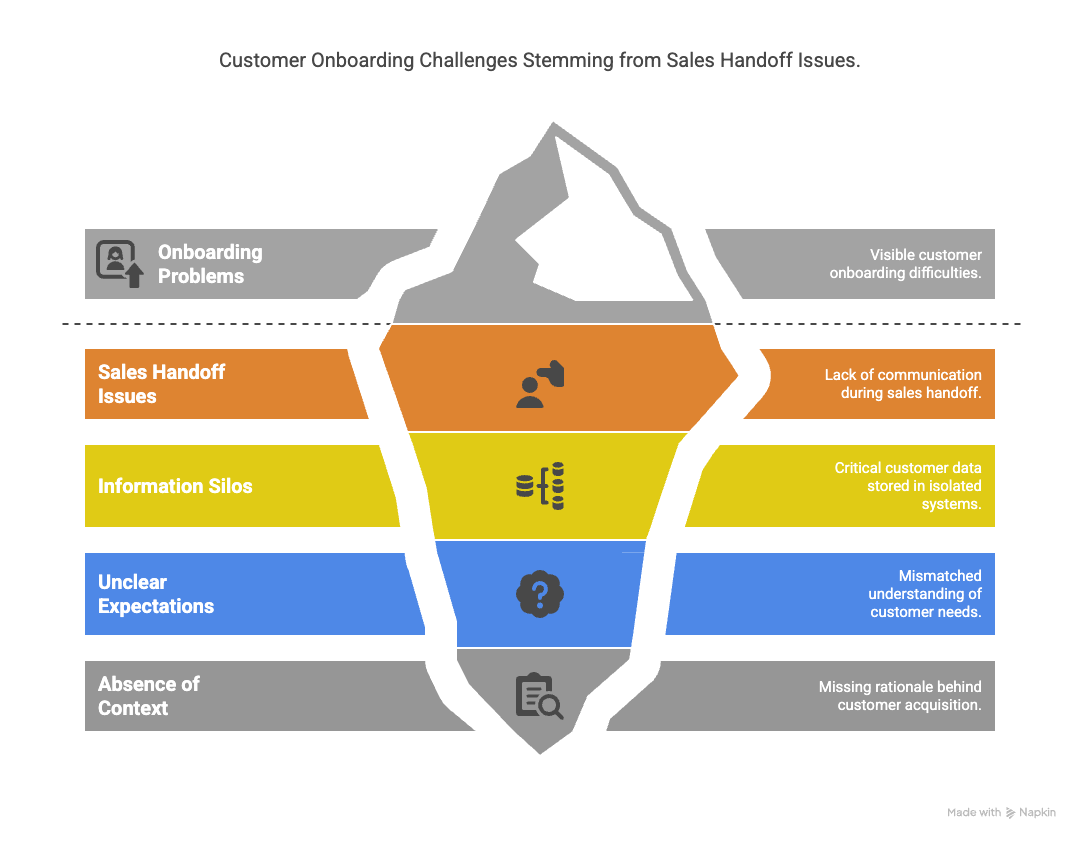AdTech Go-To-Market RACI
If your company's new Adtech or Martech product isn't lighting the world on fire like you hoped it would, don't be took quick to blame your sales team. The problem may be that your GTM process sucks.

Seamless handoffs between sales, onboarding, and customer success are critical to delivering a consistent customer experience and unlocking long-term growth. This post explores where friction typically occurs and outlines actionable strategies to drive retention through structured transitions, shared accountability, and early customer value.
Most teams celebrate when a deal closes. But that moment, the signature, the “we’re in,” isn’t the end of the customer journey. It’s the beginning. And the space between "closed-won" and "customer success" is often where things quietly fall apart.
I’ve led several high-performing sales teams. I’ve sat at the table with product, engineering, onboarding, and customer success. I’ve seen what happens when handoffs work and what happens when they don’t.
This post isn’t just about my challenges and successes. It’s about a systemic issue facing modern go-to-market (GTM) teams, and what we can do to fix it.
Let’s rewind to my time leading sales at a high-growth startup. Our team was hitting targets, consistently closing six-figure deals. These wins were hard-earned, with technical, consultative sales, heavy Sales Engineering involvement, and tailored solutions.
But post-sale, the story changed. Our onboarding and success teams were often set up to fail. Custom solutions promised by sales didn't always translate clearly downstream. Clients got frustrated. Internal teams got defensive. Everyone felt the friction.
We weren’t alone. This is the hidden tension in high-growth B2B SaaS companies.
The customer journey used to look like a funnel, with clean handoffs from marketing to sales to onboarding to customer success. But today, it’s more like a flywheel. Buyers interact with multiple departments at every stage, often simultaneously.
Modern GTM teams must treat customer lifecycle stages as fluid, not linear. That means handoffs aren’t single moments. They are ongoing transitions that require context, collaboration, and continuity.
Across hundreds of customer lifecycles, we consistently saw the same breakdowns:

Each of these friction points chips away at trust. And trust is hard to win back once it’s gone.
We took a hard look at our process and implemented four structural changes.
We codified what a “standard” deal looked like. Templated onboarding, core use cases, minimal integration. Then we documented what made a deal “non-standard,” such as custom work, advanced data flows, and heavy SE involvement. This helped:
We required cross-functional sign-off for non-standard deals. Sales, Solutions, and CS had to agree on scope and feasibility before anything hit DocuSign. This shifted the tone from "just get the deal done" to "set the customer up to succeed."
If a Sales Engineer was involved in closing a deal, they stayed on through onboarding. No handoff happened without continuity. This kept technical promises aligned and prevented “translation” errors between pre-sale and post-sale.
For custom deals, we created detailed SOWs that clarified what was in scope, what wasn’t, and who owned what. Vague promises became real deliverables.
.png)
While our solution worked for us, the broader principles apply across industries.
Don’t rely on Slack threads and memory. Use a formal checklist for every handoff:
Sales compensation should reward long-term success, not just bookings. Customer success should be looped in early. Onboarding shouldn’t be learning about the customer for the first time.
Every customer should know who is doing what and when. Don’t make them figure it out. Don’t let gaps go unowned.
Retention starts long before renewal. Here’s what we tracked:
Each of these is a signal. Smooth handoffs accelerate these milestones. Rocky ones delay them.
.png)
Each of these is a signal. Smooth handoffs accelerate these milestones. Rocky ones delay them.
Customers who realize value in the first 30 days have 3x the LTV of those who don’t.
Because this isn’t just about execution. It’s about trust.
Customers don’t care how your teams are organized. They care whether your company follows through. Whether what they were promised matches what they experience.
And the numbers back it up:
Handoffs aren’t an internal process detail. They are a growth lever.
Seamless handoffs don’t happen by accident. They require structure, shared incentives, and an obsession with continuity. If you’re serious about delivering a standout customer experience, and growing through retention, you need to treat every transition point as a product in itself.
The moment a deal closes isn’t the end of your job. It’s the start of your customer’s story. And how that story begins shapes everything that comes next.
.png)
If your company's new Adtech or Martech product isn't lighting the world on fire like you hoped it would, don't be took quick to blame your sales team. The problem may be that your GTM process sucks.

In 2025, the most sustainable growth will come from being the brand people think of first, not the one they found in a sidebar ad. Buyers are craving trust and authenticity. Channels are crowded. Attribution is foggy. And the most underrated growth lever in B2B right now? Brand. Build it. Invest in it. Defend it. Because if people don’t believe in your brand your performance ads are just noise.

The dark funnel isn’t new—it’s just finally being named. It’s where trust is formed, where awareness grows, and where decisions begin. The brands that win in 2025 will stop obsessing over what they can’t track—and start investing in being present, consistent, and influential where their buyers are making up their minds. Even if it’s in a group chat you’ll never see.